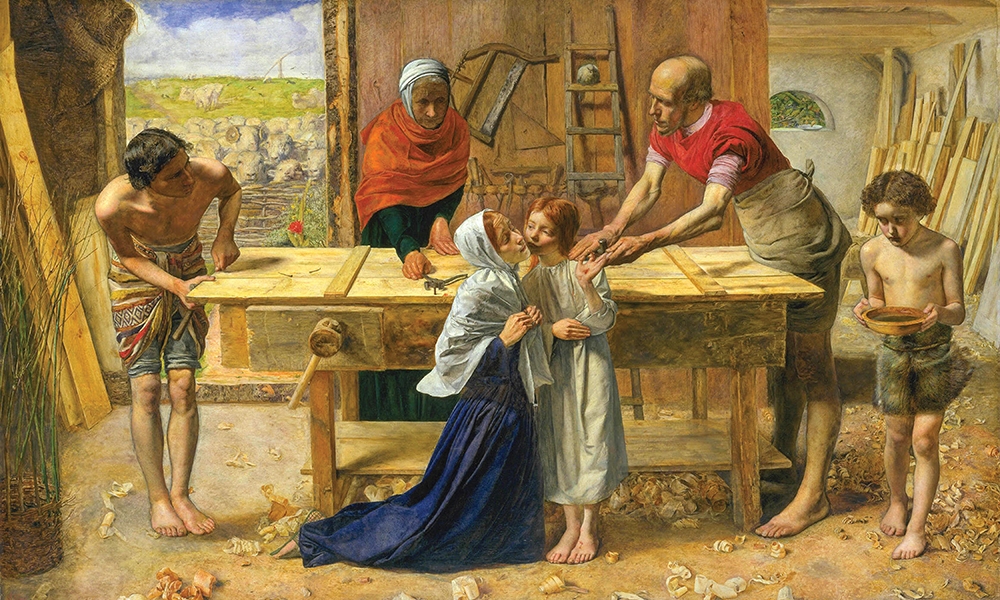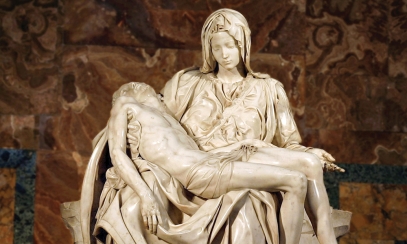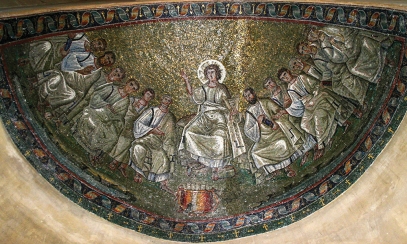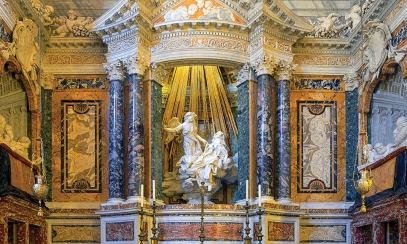
Inviting the extraordinary into our ordinary
Our Catholic faith divides the liturgical year into different seasons: Advent, Christmas, Lent, Sacred Paschal Triduum, Easter and Ordinary Time. Even in Ordinary Time, Jesus’ life is not what we would call ordinary, and with a secular definition, my ordinary time is not the same as your ordinary time.
Our Catholic faith divides the liturgical year into different seasons: Advent, Christmas, Lent, Sacred Paschal Triduum, Easter and Ordinary Time. Even in Ordinary Time, Jesus’ life is not what we would call ordinary, and with a secular definition, my ordinary time is not the same as your ordinary time.
We have little information about Jesus’ life before he began his public ministry, but we can allow our imaginations to picture Jesus as a child and a young man. In his painting Christ in the House of His Parents, Sir John Everett Millais pictures Jesus in Joseph’s carpentry shop. Young Jesus, in the center of the painting, has cut his hand on a nail, which his grandmother, St. Anne, is removing. Joseph is examining the wound, and Mary is offering consolation. Curiously, she offers her cheek for Jesus to kiss rather than the other way around. A young John the Baptist, in an animal skin garment, is bringing a bowl of water to cleanse the wound and the blood that has dripped on Jesus’s foot. In the background is a dove perched on a ladder (Jacob’s ladder?) symbolizing the Holy Spirit. At the far left is a basket (container/church?), which is still being crafted. Through a doorway, we see a flock of sheep. While being a bit heavy-handed with the imagery, the painting does invite our imaginations to picture Jesus as a child, experiencing his unique family.
I have a print of this painting in my woodshop as a simple reminder of Jesus’ humanity. It keeps Jesus off the pedestal and in the realm of my “normal” life. It is in our ordinariness that each of us live out our own lives, and it is in accepting the mystery that Jesus is both fully human and fully divine that we ourselves are called to live his mystery in our own lives.
Carl Jung said, “Life is a luminous pause between two great mysteries, which themselves are one.” It is today that we experience God’s redemptive love in space and eternally deep time. Jesus became human to show us how to be human in its fullness. If we begin to understand the connection between our own and Jesus’ humanity, it opens the possibility of recognizing our full identity. As the Catechism of the Catholic Church teaches us, “The divine image is present in every human” (CCC 1702), enabled by the indwelling Holy Spirit.
We are called to encounter our life’s meaning, not happiness, and to live it in this world. St. Augustine said “Thou hast made us for thyself, and our hearts are restless until they rest in thee.” In order to manifest this meaning, this true self, our faith necessarily makes us countercultural. Rather than follow the whims of the world, why not attend to what God has for each of us now? Instead of imagining ourselves in Jesus’ time, let us imagine Jesus with us right now in our times, in our lives. Extraordinary!
Mark Landers is a parishioner of St. Austin Parish in Austin and a member of the Diocesan Fine Arts Council. He and his wife, Christina, own and operate Landers’ Studio, a woodworking shop and design studio. They design and construct custom furniture and high-quality architectural piecework.



